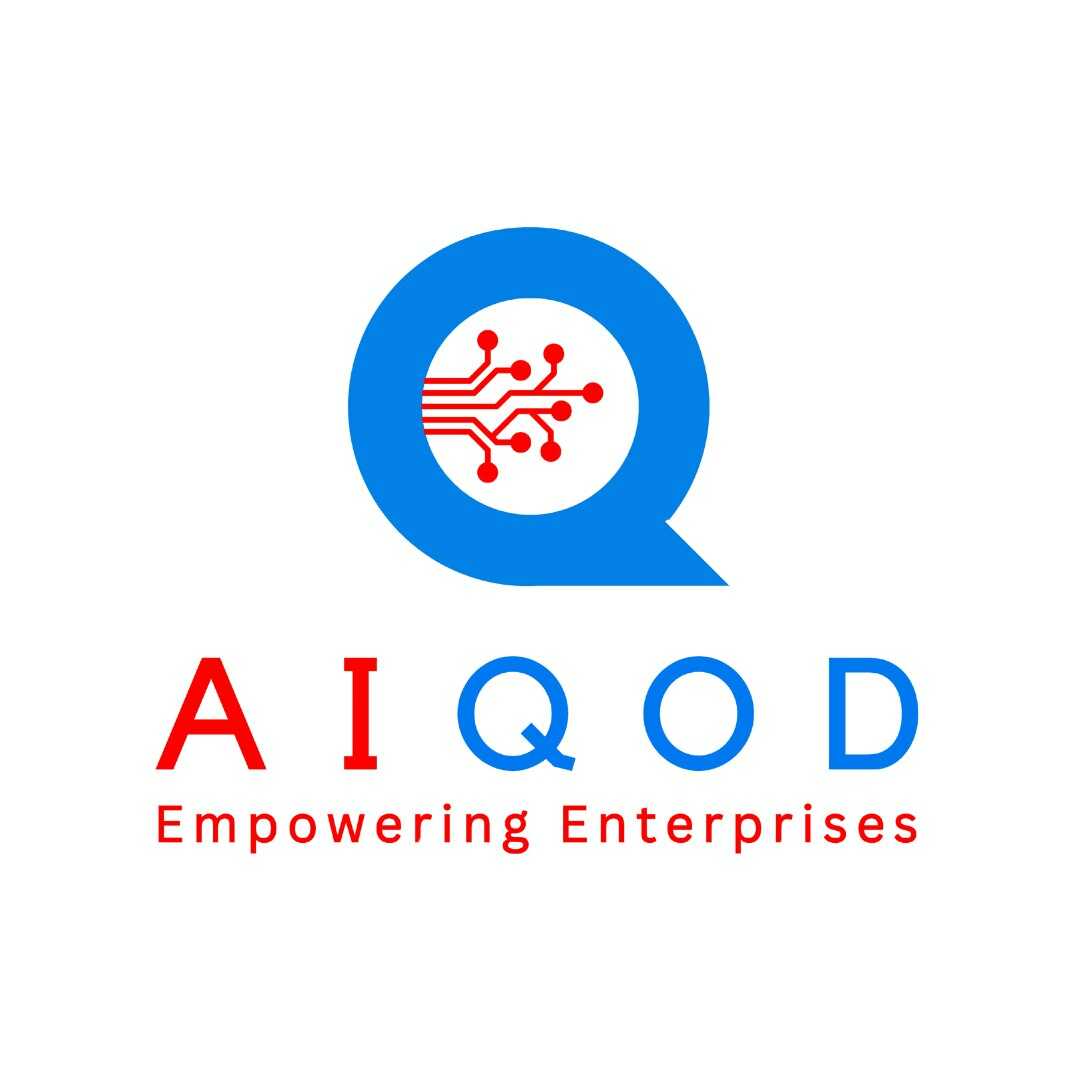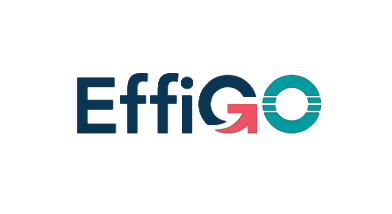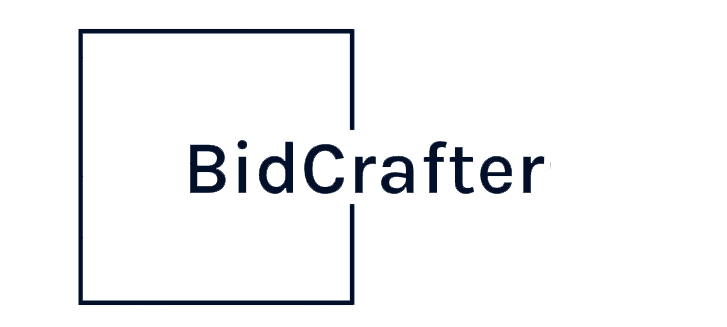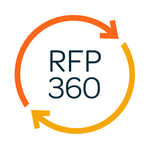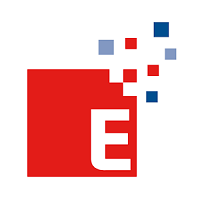What Is Procure To Pay Software?
Procure to Pay (P2P) software is a comprehensive solution that automates the entire process of procuring goods and services for businesses. It includes all phases from requisitioning to payment, resulting in a more efficient and organized procurement process. At its core, peer-to-peer software automates and unifies the multiple processes of procurement, including determining the demand for a product or service, creating a purchase order, receiving the products or services, and initiating payment.
This removes manual and paper-based operations, lowering mistake rates and increasing overall efficiency. One of the most important characteristics of P2P software is the ability to manage vendor relationships and contracts. The program may monitor vendor performance, negotiate pricing, and ensure compliance with the company's procurement standards. This not only saves time, but also ensures that the company receives the most value for its purchases.
Another major feature of P2P software is its inventory management capabilities. It can monitor inventory levels, send out alerts when stock is running low, and reorder automatically when necessary. This eliminates overstocking and product shortages, saving the company money and time. P2P software also enables visibility and control over spending by centralizing all purchasing actions. It enables firms to create approval workflows, which ensure that all purchases are allowed and under budget.
This real-time access into spending allows firms to find cost-cutting possibilities and make data-driven decisions. Overall, peer-to-peer software is a crucial tool for firms trying to expedite their procurement process and increase their bottom line. It provides various advantages, including greater efficiency, vendor management, inventory control, and spend visibility. With its numerous features and capabilities, P2P software is an excellent investment for any firm.
What Are The Recent Trends In Procure To Pay Software?
Procure to Pay (P2P) software automates and optimizes procurement and payment activities, allowing firms to streamline their purchasing processes. P2P software has undergone considerable adjustments and breakthroughs as technology evolves.
Buyers should be aware of the following current trends in the P2P software category:
1. Cloud-Based Solutions: One of the most significant trends in P2P software is the transition to cloud-based solutions. Cloud-based P2P software provides various advantages, including cost-effectiveness, scalability, and ease of use. It also enables organizations to access the software from any location, at any time, and via any device, making it ideal for remote teams.
2. Artificial Intelligence (AI) And Machine Learning (ML): AI and ML are transforming the procurement process by giving intelligent, data-driven insights. P2P software with AI and ML capabilities may evaluate past data, find trends, and forecast outcomes to assist businesses in making more informed purchasing decisions. It can also automate repetitive activities and decrease manual errors, so saving time and increasing productivity.
3. Mobile Functionality: As mobile devices become more prevalent in the workplace, P2P software is increasingly focusing on mobile functionality. Mobile apps enable employees to create, evaluate, and approve purchase orders on the move, saving processing time and increasing agility. They also enable real-time visibility into the status of purchases, resulting in a smooth procurement process.
4. Integration With Other Systems: P2P software is increasingly being integrated with other systems, including Enterprise Resource Planning (ERP) software, accounting software, and supplier networks. This interface enables a smooth flow of data while reducing the manual work required for data entry and reconciliation. It also provides a comprehensive view of the procurement process, helping organizations to make better decisions.
5. Emphasis On User Experience: P2P software is becoming more user-friendly and intuitive, with an emphasis on improving the overall user experience. This trend includes customized dashboards, a clear and intuitive interface, and easy-to-use workflows. A user-friendly P2P software increases user acceptance, resulting in improved utilization and a higher ROI.
6. Supply Chain Visibility And Risk Management: As a result of recent global events, there is a renewed emphasis on supply chain visibility and risk management in the procurement process. P2P software with strong analytics and reporting capabilities can give you real-time insight into supplier performance, potential risks, and disruptions. It enables firms to proactively manage risks and develop contingency plans to ensure company continuity.
Benefits Of Using Procure To Pay Software
Procure to Pay (P2P) software is a comprehensive system that aims to streamline the entire procurement process, from demand to payment. This software enables firms to increase productivity, automate tasks, and decrease manual errors, resulting in cost savings and improved supplier management.
Here are the main advantages of using Procure to Pay software for your business:
1. Streamlines Procurement Process: One of the primary advantages of adopting P2P software is that it simplifies the entire procurement process. A unified system automates all procurement tasks, from drafting purchase orders to maintaining supplier contracts, decreasing manual errors and processing delays. This saves time and money, allowing your firm to concentrate on critical initiatives.
2. Promotes Compliance: P2P software assists firms in ensuring compliance and adhering to internal policies and industry standards. The software's built-in procedures and approval processes ensure that all procurement activities are managed and compliant. This not only eliminates compliance concerns, but also promotes transparency and accountability in the procurement process.
3. Improves Cost Savings: By automating the procurement process, P2P software allows firms to dramatically lower costs. Organizations that have more visibility and control over their expenditure can negotiate better agreements with suppliers, identify cost-saving opportunities, and manage expenses in real time. This results in greater cost reductions and enhanced profitability for the company.
4. Improves Visibility: P2P software offers real-time visibility into your procurement data, allowing you to track spending and supplier performance. This enables firms to detect procurement inefficiencies, make data-driven decisions, and get insights to improve their procurement strategy.
5. Improves Supplier Management: P2P software helps firms manage their supplier relationships more effectively. Organizations can strengthen their supplier relationships by tracking supplier performance, monitoring contract terms, and managing payments. This can lead to more favorable pricing negotiations, faster delivery times, and more supplier satisfaction.
Important Factors To Consider While Purchasing Procure To Pay Software?
When it comes to selecting procure to pay software, there are a few key elements to consider before making a purchase. This software is intended to expedite and automate the traditional procurement process, from procuring products and services to paying for them.
Businesses that use the correct procure to pay software can streamline their procurement process, decrease expenses, and increase overall efficiency.
1. Company Needs And Requirements: The first and most important aspect to consider is your company's unique needs and requirements. Each organization is unique and has its own procurement processes, so it's critical to select software that corresponds with your company's objectives and operations. This could include features like centralized purchasing, configurable workflows, and connectivity with your current ERP system.
2. User-Friendly Interface: The software's interface should be simple and straightforward, with easy navigation and functionality. A complicated interface might cause employee misunderstanding and resistance, limiting software adoption and utilization. Look for a solution that is easy to use and can be tailored to your team's specific requirements.
3. Budget: Procure to pay software prices vary depending on the features and functionalities provided. It is critical to create a budget and conduct research to discover a solution that fits within your financial limits. Consider the return on investment - a more expensive software with advanced functionality may ultimately save your company more money in the long term.
4. Integration Capabilities: Procure-to-pay software should work effortlessly with your existing systems and software, such as accounting or enterprise resource planning (ERP). This lowers the need for human data entry while increasing accuracy and efficiency. Make care to check for integration and compatibility with your existing systems.
5. Security And Compliance: Because procurement involves sensitive information such as vendor contracts and payment details, security and compliance are of the highest priority. Ensure that the software includes advanced security features such as encryption and data backup. It is also critical to ensure that the software complies with your industry's regulatory needs and standards.
6. Scalability: As your firm expands, so will your purchase requirements. It is critical to select procure-to-pay software that can support your future growth and scalability. This could include the ability to handle higher transaction volumes and add new users without incurring major costs.
7. Implementation And Support: A procure-to-pay program's effectiveness is dependent on the implementation procedure and ongoing support from the software vendor. Look for a vendor who will provide enough training and assistance for your staff to guarantee a smooth transition.
Additionally, look into the vendor's reputation and customer reviews to get a sense of their level of service. By taking these crucial elements into account, you will be better able to select the appropriate procure to pay software for your firm. Make an informed decision by considering your company's specific demands, budget, and long-term goals. With the correct tools in place, you can improve your procurement process and boost overall business performance.
What Are The Key Features To Look For In Procure To Pay Software?
When it comes to choosing the best Procure to Pay (P2P) software for your business, there are a few crucial factors to consider. These features can have a significant impact on the efficiency and effectiveness of your purchase and payment processes, therefore it is critical to select software with all of the necessary capabilities to match your individual requirements.
1. User-Friendly Interface: The first characteristic to look for in P2P software is a user-friendly interface. This means that the software should be intuitive and simple to use for all users, regardless of technical background. A well-designed interface can boost user adoption and simplify the procurement process.
2. Automated Purchase: One of the primary advantages of P2P software is the ability to automate the purchase process. Look for software that supports automated purchase requisitions and purchase order preparation. This can save your team a lot of time and lessen the likelihood of errors and delays.
3. Supplier Management: Effective P2P software should also include strong supplier management features. This provides capabilities like supplier onboarding, contract administration, performance tracking for vendors, and automated supplier communication.
4. Approval Processes: Approval processes are an important feature of P2P software because they provide control and visibility into the purchasing process. Look for software that allows you to create unique approval workflows to ensure that all purchases are allowed and in accordance with your organization's regulations.
5. Invoice Processing: When it comes to payment processing, a P2P software should include functionality for capturing, validating, and matching invoices to purchase orders and contracts. This will help to speed the payment process and guarantee the invoices are processed correctly.
6. Integration Capabilities: It is critical to select P2P software that works seamlessly with your current systems, such as ERP, accounting, and inventory management software. This will ensure a smooth flow of data while eliminating the need for human data entry and revisions.
7. Analytics And Reporting: Data is critical for making sound judgments. Look for P2P software that includes powerful analytics and reporting features, allowing you to see spending patterns, supplier performance, and cost-cutting potential.
8. Mobile Accessibility: In today's fast-paced work world, accessing information on the go is critical. Look for P2P software that includes a mobile app or is mobile-friendly, allowing users to manage purchases and payments from any location, at any time.
Why Do Businesses Need Procure to Pay Software?
Procure-to-Pay software has become a vital tool for modern enterprises. It simplifies the entire process of purchasing goods and services, from detecting a need to making payment, and everything in between. In today's competitive market, time and cost efficiency are critical to the success of any organization. Procure-to-Pay software provides a solution for both.
First and foremost, this software centralizes the entire procurement process, making it easier for firms to organize and track their purchase activity. It eliminates the need for manual tracking and promotes openness throughout the purchase process. With all purchase data in one place, organizations can simply examine their spending, spot inconsistencies, and make informed decisions.
Second, Procure to Pay software automates numerous manual operations associated with the procurement process, such as drafting purchase orders, receiving approvals, and processing payments. This not only removes the possibility of human error, but also saves enterprises a significant amount of time and effort. Automated processes allow activities to be completed faster, resulting in a more efficient procurement process.
Furthermore, Procure to Pay software can aid with cost management. It enables organizations to negotiate better agreements with suppliers, track expenditure, and find potential cost savings. Businesses can lower total procurement expenses and enhance their bottom line by properly monitoring and analyzing their spending. Another significant advantage of Procure to Pay software is its compatibility with other systems such as inventory management and accounting.
This integration guarantees that all purchase information is appropriately documented and shared across departments. It decreases the likelihood of repeat data entry while increasing the overall accuracy and integrity of financial data.
How Much Time Is Required To Implement Procure To Pay Software?
The deployment timetable for procure to pay software varies depending on several aspects, including your organization's size, the complexity of your present procurement processes, and the extent of customization necessary for the program. The implementation procedure can last anything from a few weeks to many months.
During this period, the program will need to be customized to meet your specific company requirements, such as setting up approval workflows, making custom purchase order templates, and interfacing with your accounting system. It is also critical to allow for adequate testing and training to enable a smooth transition to the new system.
Smaller firms with simpler procurement processes may be able to complete the implementation process more quickly, whereas larger organizations with more complex systems may take longer. It is critical to collaborate closely with your software vendor to create a realistic timeframe that meets your organization's requirements and assures effective installation.
It is also worth mentioning that the installation timetable for procure-to-pay software is only one factor to consider when selecting a solution. It is also critical to evaluate the software's functionality, usability, and customer support when choosing a solution that not only fulfills your timetable but also your organization's specific demands and requirements.
What Is The Level Of Customization Available In Procure To Pay Software?
Procure to Pay software, commonly known as P2P software, is a critical tool for firms seeking to optimize their procurement process. One of the primary benefits of P2P software is its flexibility to be tailored to a company's specific requirements. In fact, the level of customisation offered by P2P software is an important consideration to consider when making a purchase decision.
Most P2P software allows some level of customization, however the extent of this customization varies widely between vendors. Some software may allow for minor customizations such as logo and color changes, while others may give more extensive choices like as custom fields, templates, and processes. Buyers must carefully analyze the level of customization available before selecting a software that best matches their specific procurement processes.
The user interface of P2P software can be changed. This comprises the software’s layout, design, and navigation. A consumer may favor a clean and straightforward interface, but another may choose a more visually appealing and intuitive design. Therefore, it is necessary to examine the user interface and the extent of customisation while assessing P2P software.Another crucial feature to consider is the software's capacity to tailor workflows and approval processes.
P2P software enables firms to automate their procurement operations, however demands and requirements vary every company. As a result, the ability to modify workflows and approval processes based on unique business rules and hierarchies is critical.P2P software also supports vendor and contract management, allowing organizations to store and manage information about vendors and contracts.
This level of customisation enables firms to adjust the software to their individual vendor and contract requirements, resulting in a more efficient and successful process. Finally, it is worth noting that the level of customization in P2P software might impact pricing. More complex customization choices may come at a higher cost, therefore customers must carefully assess their demands and budget when determining the level of customization in P2P software.
Which Industries Can Benefit The Most From Procure To Pay Software?
Procure to Pay software is a sophisticated solution that simplifies and automates the purchase process for businesses. With its comprehensive capabilities, this program allows firms to manage the full procurement process, from original demand to final payment. While Procure to Pay software can assist a variety of sectors, certain industries may profit more significantly from its implementation.
Lest's explore, we'll look at the main industries that can benefit from Procure to Pay software and how it can help them meet their business objectives.
1. Manufacturing Industry: Manufacturing enterprises deal with a diverse range of products and services, requiring sophisticated procurement and payment systems. With Procure to Pay software, they can simply manage their vendors, source materials, and track orders in real time. The software's inventory management capabilities enable producers to maintain optimal stock levels while eliminating the danger of stockouts. This leads to enhanced operational efficiency, cost savings, and more customer satisfaction.
2. Healthcare Business: The healthcare business requires a large volume of materials and services to function properly. Procure to Pay software can help healthcare facilities manage their procurement process, which includes medical supplies, equipment, and services, in a more efficient and cost-effective manner. With automated purchase orders, invoicing, and payment processes, healthcare professionals may focus on providing great patient care without interruption.
3. Retail Industry: The retail industry has a complex procurement and payment process, which includes procuring items from suppliers, controlling inventory, and processing payments. Procure to Pay software streamlines the process by automating purchase orders, vendor management, and invoice processing, resulting in timely payments and improved inventory levels. This not only saves time, but also reduces the likelihood of overstocking and understocking.
4. Construction Business: The construction business contains many subcontractors, suppliers, and materials, making it difficult to manage high volumes of transactions. Procure to Pay software enables construction organizations to track project expenses, manage various vendors, and consolidate bills. These characteristics enhance cost control, project timeliness, and cash flow management.
5. Professional Services Industry: From sourcing goods and services to managing vendor contracts, professional service businesses have a complex procurement process that has a direct impact on profitability. Procure to Pay software offers a consolidated platform for streamlining all procurement procedures, tracking contract renewals, and monitoring spending. This leads to enhanced financial control and better vendor management.
Conclusion
Finally, selecting the best Procure to Pay (P2P) software for your company is an important decision. It can have a huge impact on your company's productivity, cost savings, and overall performance. By following the steps provided in this buyer's guide, you will be able to properly analyze and choose a P2P solution that matches your specific company requirements. First, establish your organization's procurement-related pain points and goals.
This will help you identify the most crucial features and functionality for your P2P program. Next, analyze the benefits and drawbacks of various deployment choices, such as on-premise, cloud-based, or hybrid models, to determine which is ideal for your company. When evaluating possible P2P solutions, emphasis a user-friendly interface, customized workflows, and interaction with your existing systems.
These elements will have a significant impact on user adoption and the software's overall performance. It is also critical to evaluate the software provider's reputation, customer support, and security protocols. Look for reviews and inquire for references from other businesses to learn more about the provider's track record. Finally, assess the software's cost, which includes any additional expenses for implementation, maintenance, and upgrades.
Do not be afraid to negotiate with the provider to get the best offer for your money. With a rigorous review process and a clear understanding of your organization's requirements, you can confidently select P2P software that will expedite your procurement process, increase spend management, and create cost savings.

